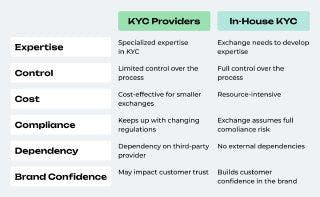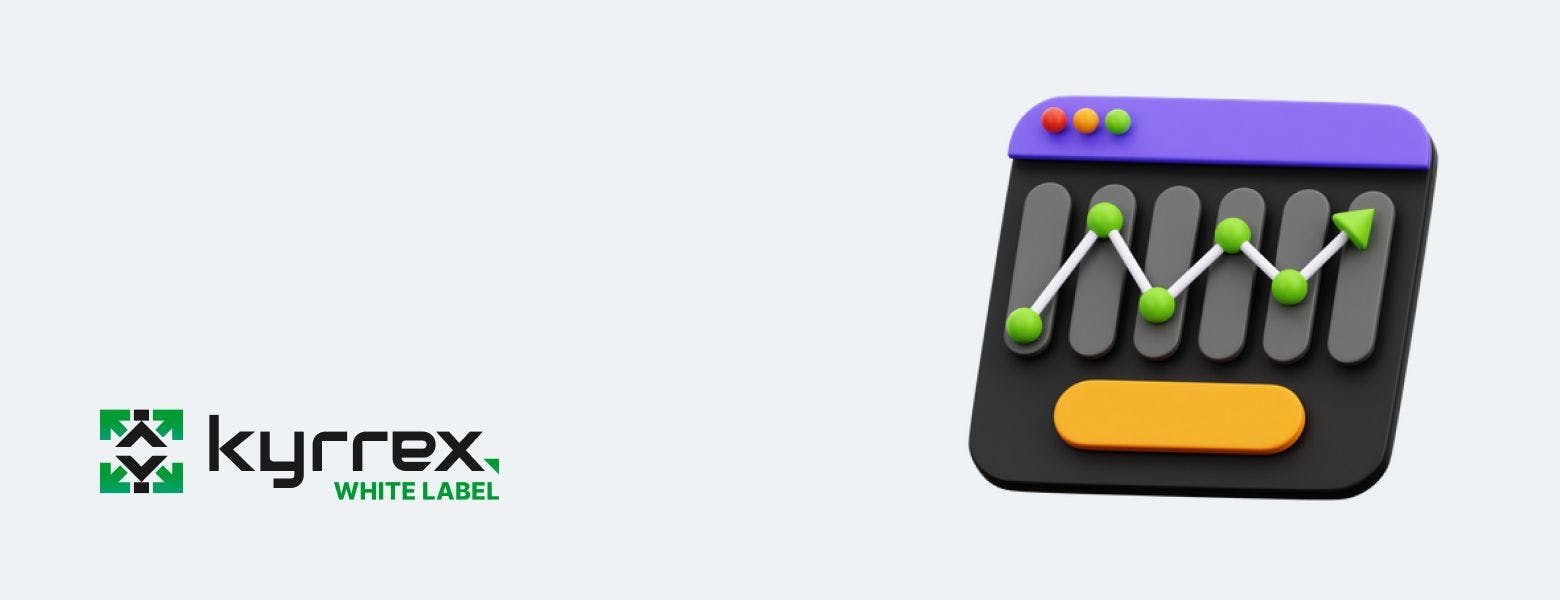Ever wondered who keeps the gears turning in the fast-paced world of cryptocurrencies? How do crypto liquidity providers work, and what role do they play in ensuring a smooth and stable market for digital assets? In this blog post, we’ll explore the world of crypto liquidity providers, their various types, the incentives they receive, the challenges they face, and how one can become a crypto liquidity provider. Let’s dive in!
- Crypto Liquidity Providers facilitate liquid markets and enhance price stability by providing adequate liquidity.
- They are incentivized to participate in the market through fee reductions, rebates and rewards, and exclusive programs offered by exchanges.
- To become a crypto liquidity provider one must assess their trading strategy, choose an exchange, and manage associated risks.
In both traditional financial markets and the cryptocurrency market, liquidity providers play a crucial role in maintaining an efficient and stable trading environment. They ensure smooth trading operations by facilitating a liquid market, enhancing price stability, and reducing price slippage.
But what exactly is liquidity, and why is it so important for the market? In a nutshell, liquidity refers to the ease with which an asset can be bought or sold without significantly affecting its price. High liquidity in the market ensures that there are enough buyers and sellers to satisfy the demand for liquid assets, which in turn helps maintain stable prices.
Now, let’s take a closer look at the different ways crypto liquidity providers contribute to market stability.
Crypto liquidity providers play a pivotal role in ensuring seamless trading by guaranteeing liquidity in the market, pairing buyers and sellers, and providing an uninterrupted supply of digital assets. They maintain the availability of both buy and sell orders in the market, making it easier for traders to execute their trades without any significant delays or disruptions. This is particularly crucial in the cryptocurrency market, where low liquidity can result in high volatility and drastic price changes, creating an illiquid market with increased risks for traders and investors.
In essence, liquidity providers act as the backbone of the market, ensuring that there are enough buy and sell orders to keep the gears turning. By providing liquidity, they help create a smooth trading experience for market participants, reducing the likelihood of drastic price fluctuations that can occur when dealing with illiquid assets.
So, how do they contribute to price stability in the market?
Price stability is an essential aspect of any healthy market, and liquidity providers play a significant role in maintaining it. By injecting buy and sell orders into the market, they help maintain an equilibrium market price that is satisfactory to all parties involved. In a market with high liquidity, even large trades have a minimal impact on asset prices, ensuring a more stable trading environment.
Reduced liquidity, on the other hand, can result in substantial price fluctuations, as even minor shifts in supply or demand can have a considerable influence on prices. To counteract this, crypto liquidity providers actively inject buy and sell orders into the market, effectively maintaining price stability and creating a more efficient trading environment.
Price slippage is the discrepancy between the anticipated price of a trade and the actual price at which the trade is executed. Low liquidity or high volatility in the market can result in significant changes in price. This can have a damaging effect on investments. Crypto liquidity providers are integral in mitigating price slippage by ensuring adequate liquidity in the market, enabling traders to purchase or sell assets promptly and at a reasonable price.
By providing liquidity, crypto liquidity providers assist in minimizing the discrepancy between the projected price and the executed price, thereby reducing the possibility of slippage. This ensures that traders can execute their trades quickly and efficiently, without having to worry about significant deviations from their anticipated prices.
Now that we’ve seen the critical role liquidity providers play in the market, let’s explore the different types of crypto liquidity providers.
There are several types of crypto liquidity providers, each with their unique strategies and approaches to providing liquidity in the market. Broadly speaking, crypto liquidity providers can be classified as:
- Institutional liquidity providers
- Liquidity providers on decentralized exchanges (DEXs) and automated market makers (AMMs)
- Companies or entities offering buy and sell-side liquidity to cryptocurrency exchanges.
Often referred to as ILPs, they play a pivotal role in the financial markets. They are typically large financial institutions, such as banks, investment firms, or specialized market makers, that offer substantial liquidity to support trading activities. Institutional Liquidity Providers facilitate smooth and efficient market operations by buying and selling financial instruments, including stocks, bonds, currencies, and cryptocurrencies, on a large scale.
The presence of ILPs enhances market stability, ensures competitive pricing, and provides valuable liquidity for institutions and retail traders alike.
This type of liquidity provider is vital in the world of decentralized finance (DeFi). These individuals or entities contribute assets to liquidity pools, allowing users to trade directly on DEX platforms.
By doing so, liquidity providers enable the seamless exchange of cryptocurrencies while earning fees and rewards in return.
These companies are instrumental in ensuring cryptocurrency platforms operate smoothly and efficiently. They enhance market depth, reduce spreads, and foster a vibrant trading environment, ultimately benefiting both traders and exchanges. They do this by providing enough liquidity on request so trading at any volume can proceed smoothly and efficiently.
An example is Kyrrex White Label. One of their products, the Kyrrex Liquidity Hub, is designed to ensure seamless liquidity management by client platforms. Kyrrex empowers exchanges to offer a superior trading experience. If you're seeking a liquidity solution that can elevate your exchange's performance, it's time to explore Kyrrex Liquidity Hub and discover the difference it can make for your platform.
All types of liquidity providers can also be grouped into 3: market makers, arbitrageurs and algorithmic traders, based on their method of providing liquidity. Let’s take a closer look at each of these types.
Market makers are entities that generate buy and sell orders to ensure a liquid market, profiting from the bid-ask spread. They play a crucial role in both traditional stock markets and cryptocurrency markets by providing liquidity and ensuring efficient market operations. By buying securities from sellers and selling securities to buyers, they help maintain a seamless flow of assets in the stock market.
Market makers benefit from the difference between the buy and sell prices they quote, referred to as the bid-ask spread. By quoting both buy and sell prices, they are able to capitalize on the spread and generate a profit.
Next, let’s examine the role of arbitrageurs in providing liquidity.
Arbitrageurs are market participants who:
- Take advantage of price discrepancies between different exchanges or trading pairs
- Capitalize on price discrepancies to purchase and sell the same asset at varying prices
- Contribute to market liquidity
- Help maintain a smooth and efficient market by ensuring that asset prices remain consistent across different trading platforms.
This process of exploiting price differences not only benefits arbitrageurs themselves, but also contributes to overall market stability by eliminating pricing inefficiencies and ensuring that asset prices remain consistent across different exchanges.
Lastly, let’s explore the world of algorithmic traders.
Algorithmic traders are individuals who employ automated trading strategies to provide liquidity, typically reacting to market signals and trends. By using advanced mathematical models and computer programs, these traders can make informed trading decisions in the financial markets. Algorithmic traders employ automated trading strategies to purchase and sell assets, thus providing liquidity to the market.
Furthermore, these traders often utilize advanced algorithms to analyze market signals and trends, allowing them to capitalize on opportunities and provide liquidity more efficiently. Now that we’ve explored the different types of crypto liquidity providers, let’s discuss the incentives they receive for their efforts.
Crypto liquidity providers are offered a variety of incentives to encourage their continued participation in the market. These incentives can include fee reductions, rebates and rewards, as well as exclusive programs offered by exchanges.
Let’s delve deeper into each of these incentives.
Exchanges often offer reduced fees to liquidity providers as an incentive to engage in the market. These fee reductions can take the form of higher maker fee rebates or reduced trading fees for liquidity providers. By offering lower fees, exchanges encourage participation from liquidity providers, ensuring a more liquid and efficient market for all traders.
Utilizing limit orders and adding liquidity to the market can also help traders reduce their overall trading costs, further incentivizing their participation as liquidity providers.
Rebates and rewards are another form of incentive offered to crypto liquidity providers. These incentives may be based on the liquidity provider’s trading volume or other performance metrics. By offering attractive rebates and rewards, exchanges encourage the provision of liquidity, ensuring a more efficient trading environment for all users.
Additionally, liquidity providers may be eligible for rewards based on their relative share of liquidity or receive additional incentives such as tokens or fees.
Special programs, such as Binance’s Liquidity Provider Programs, are designed to support and incentivize liquidity providers in the crypto market. These programs offer various benefits to liquidity providers, such as higher maker fee rebates, higher API limits, and low-latency connectivity services. By participating in these programs, liquidity providers can enjoy reduced trading fees, attractive rebates related to market-making activity and trading volume, and an improved trading environment for all users on the platform.
In summary, fee reductions, rebates and rewards, and special programs are all crucial incentives that encourage liquidity providers to continue contributing to the market’s efficiency and stability. However, being a crypto liquidity provider is not without its challenges.
Crypto liquidity providers face several challenges in their quest to ensure smooth and stable markets. Some of these challenges include market volatility, regulatory uncertainty, and technology and security risks.
Let’s examine each of these challenges in more detail.
Market volatility can make it difficult for liquidity providers to maintain stable prices and manage risks. In the cryptocurrency market, market volatility is often attributed to the abundance of buyers and sellers, the lack of regulation, and the lack of liquidity. Crypto liquidity providers are exposed to a variety of risks when confronted with market volatility, such as the risk of adverse selection, the risk of cross-sectional variation in liquidity, and the risk of price slippage.
To manage market volatility, liquidity providers can employ a variety of strategies, such as hedging, diversifying their portfolios, and utilizing algorithmic trading strategies. Additionally, they can use stop-loss orders and limit orders to restrict their exposure to market volatility. By closely monitoring trading volumes, liquidity providers can better adapt their strategies to changing market conditions.
Regulatory uncertainty in the cryptocurrency space can create challenges for liquidity providers, including:
- Compliance and potential legal issues
- Increased risk and volatility
- Difficulty in evaluating and managing exposure
- Restricted access to banking services
- Augmented compliance costs
These factors can significantly impact the capacity of liquidity providers to function effectively, especially when dealing with less liquid assets.
To reduce the risks associated with regulatory uncertainty, liquidity providers can stay abreast of regulatory developments, engage with regulators, and utilize technology to automate compliance processes.
Lastly, let’s discuss the technology, security, and liquidity risk that liquidity providers must manage.
Technology and security risks, such as hacking and system failures, can pose significant threat to liquidity providers’ operations and assets. These risks can be categorized into four main types:
- Operational risks: These involve the potential for system failure, data loss, and other operational issues.
- Technology risks: These involve the possibility of cyber-attacks, hacking, and other malicious activities.
- Custody risks: These involve the potential for theft or misappropriation of assets.
- Security risks: These involve the possibility of unauthorized access to systems and data.
To safeguard against these risks, liquidity providers must have robust security measures in place to ensure the security of their systems and the protection of their data.
Now that we’ve explored the challenges faced by crypto liquidity providers, let’s discuss how one can become a crypto liquidity provider.
Becoming a crypto liquidity provider involves several steps, including assessing your trading strategy, choosing an exchange, and managing risks.
Let’s delve deeper into each of these steps.
Before becoming a crypto liquidity provider, it is essential to evaluate your trading strategy to ensure that you can effectively provide liquidity in the market. Factors to consider include:
- The type of trading you intend to pursue
- The capital available
- Your risk tolerance
- The amount of time you can commit to trading
Taking these factors into consideration will help you determine if becoming a liquidity provider is the right choice for you.
A well-developed trading strategy should take into account market conditions, potential opportunities, and risk management techniques. By carefully assessing your trading strategy, you can ensure that you are well-equipped to provide liquidity in the cryptocurrency market.
Next, let’s discuss the process of choosing an exchange, including centralized exchanges.
Choosing the right exchange is crucial, as different exchanges may offer varying incentives and support for liquidity providers. When selecting an exchange, it is important to consider factors such as:
- The fees charged
- The security measures implemented
- The liquidity of the exchange
- The customer support available.
By carefully evaluating these factors, you can select an exchange that best aligns with your goals and objectives as a liquidity provider. Once you have chosen an exchange, the final step in becoming a crypto liquidity provider is managing risks.
Managing risks is an essential aspect of being a successful crypto liquidity provider. Some of the risks you may need to manage include:
- Market volatility
- Regulatory uncertainty
- Technology and security risks
- Counterparty risk
To effectively manage these risks, you should consider the following steps:
- Risk identification
- Risk assessment
- Risk treatment
- Risk monitoring and reporting
By proactively managing these risks, you can ensure the success of your operations as a crypto liquidity provider and contribute to a more stable and efficient market.
Throughout this blog post, we have explored the vital role of crypto liquidity providers in maintaining a stable and efficient market, the different types of liquidity providers, the incentives they receive, and the challenges they face. We also discussed the steps to become a crypto liquidity provider, including assessing your trading strategy, choosing an exchange, and managing risks. By understanding the intricacies of providing liquidity in the cryptocurrency market, you can contribute to a more efficient and stable trading environment for all participants. So, are you ready to dive into the world of crypto liquidity provision and help shape the future of digital asset trading?
Liquidity providers can earn transaction fees on decentralized exchanges, such as Uniswap, at a rate of around 0.3%. This fee is usually equivalent to about a 25% annual interest rate.
With lower fees available for stable assets and higher rates available for more exotic pairs, liquidity providers can make good money from providing crypto services.
A liquidity provider deposits assets into a pool to facilitate trades on DEXs and AMMs, earning Liquidity Pool Tokens (LP) in return. These tokens are also called liquidity provider tokens.
You can make money being a liquidity provider by earning transaction fees from trades within the liquidity pool or by yield farming. Liquidity providers get rewarded in proportion to the amount of crypto assets they stake, allowing them to generate extra income with minimal effort.
Liquidity providers face the risk of an impermanent loss due to sharp price fluctuations in the tokens they provide liquidity for. This occurs when one token in the pool increases or decreases more than the other, leading to losses for the liquidity provider.
The risk of impermanent loss can be mitigated by diversifying the liquidity pool, using stop-loss orders, and monitoring the market closely. Additionally, liquidity providers can use automated strategies to manage their risk.
Liquidity in cryptocurrency refers to the ease and speed with which digital assets can be bought and sold near their market prices. Cryptocurrency investors must assess a coin’s liquidity before investing, as low liquidity can result in significant price volatility.








